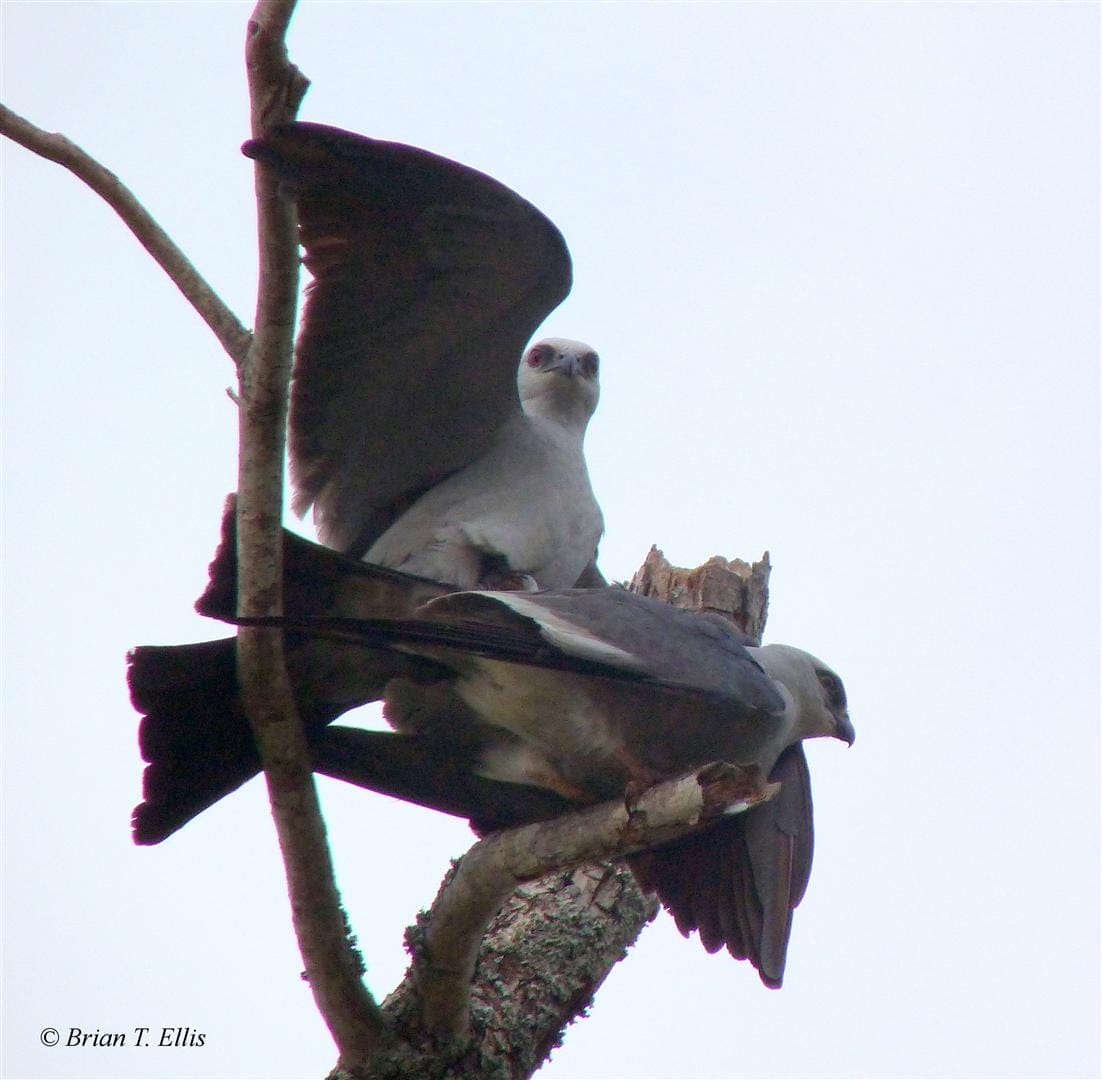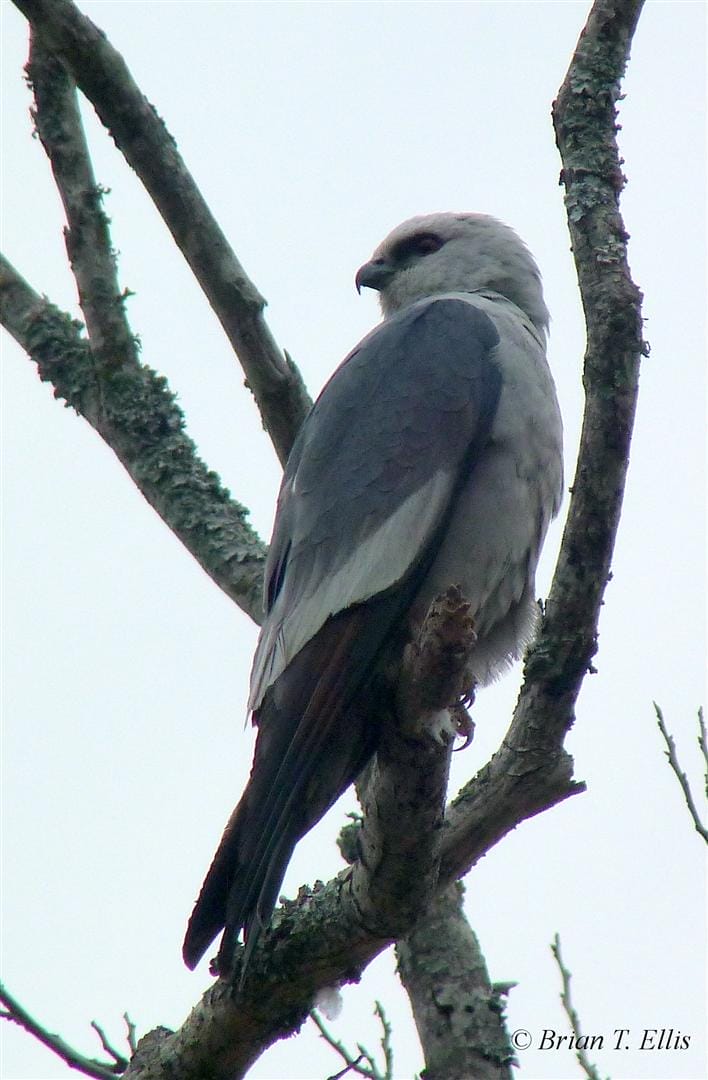Birdwatching is a great way to explore a country. WBCP member Brian Ellis writes about combining work and birdwatching during a recent trip to the US.
Raptors and Buzzards in the USA
by Brian Ellis
After many many years I have recently taken up birding again. So I am very much a newbie but have an advantage on many in that I travel often once or twice a year to other countries. The past year of 2012 I spent about two months visiting seven states in the US.
There are many species of raptor in the US and I was privileged to see a few of them. My first instance was when staying in Buena Park (Greater Los Angeles area). As I only have meetings usually in the evenings my days were free and I was able to visit some birding sites.
Friends suggested I go to a small nature reserve in Huntington Beach Park and using a loaned car I visited the Park. Disappointed on the whole. The nature reserve was very small and it was also closed. I therefore wandered around the park. There were birds about of course. Common birds like a Black Phoebe Sayornis nigricans and Allen’s Hummingbird Slasphorus sasin were photographed. In the small lake there were some Double-crested Cormorants Phalacrocorax auritus plus the usual ducks. It was while wandering back to the car park somewhat disappointed in so few birds that I looked up and saw the raptor sitting on the top most branch of a tree. I am a bit hopeless at recognition but put it down as a common Red-shouldered Hawk Butero lineatus. It did not seem to be bothered what-so-ever at this strange creature below peering up at it and trying to take its photo.
Well I gave up at the park and decided to visit Bolsa Chica Ecological Reserve where I had been the day previously. There I met up with another twitcher and we enjoyed ourselves chatting. He was a local man so that helped and he kindly recommended a good bird book to me. While there I saw my second raptor. In fact a pair of American Kestrels Falco sparverius. Again they seemed little bothered by us humans. They posed very well on top of a convenient tree. Also saw a buzzard some way off but more about those later.
The next day I moved on to the San Diego area traveling by train from Buena Park. This was a Saturday and I was due to preach in the church I was visiting on the Sunday. Monday however was free and the person I was staying with was a newbie twitcher. Much newer than myself. They had quite a few common birds coming to their bird feeder such as a California Towhee Melozone crissalis, Northern Mocking Bird Mimus polyglottos, and the very common Mourning Dove Zenaida macroura. On the Monday I hoped to spend the day birding but ran into a snag – no transport. The lady of the house had to use the car that day and my host was unwell. The nearest place I could go birding by “Shanks’s pony” (that means walking) was Lake Hodges about 4 kms away. So off I set down the main road armed with a snack and bottled water. It was a good walk and it was getting warm. The effort however was well worth it. Did not see much on the way but many birds in the area (will leave that for another article). This one is about raptors. I only saw two. The first was an Osprey Pandion haliaetus perched on a dead tree, not too far out into the very large lake which is about 7 kms long. It shared its perch with four Double-crested Cormorants. While at Lake Hodges (well worth a visit) saw another American Kestrel sitting on a wire and several other raptors circling too far away for this newbie to identify.
This article is also about buzzards. I am using the word buzzard as that is the common name for them in cowboy films. They are the vultures, the scavengers. Everyone refers to them as buzzards.
My next port of call was Dallas in Texas. I actually stayed south west of Dallas in Mansfield where I saw my first vulture from a much nearer point. The two species which are found in the US were constantly circling, the Black Vulture Coragyps atratus and the Turkey Vulture Cathartes aura. While in a small local park a number of Black Vultures landed on a cell-phone tower and I was able to get a reasonable photo. I had to wait a while to get a shot of the Turkey Vulture.


However let me digress a little. My hosts whom I have stayed with before have several hectares of land which contains a small pond. I was told that a heron flies in and roosts there every night. Sure enough it did. It was a Yellow-crowned Night Heron Nyctanassa violacea. There was no cover and I did not want to spook the bird as it was settling down for the night so did not get too close, hence the photo is not as good as I would have liked.
There was another interesting visitor to the place I was staying – a wren. My friends did not know what species of wren it was. It had made a nest on the porch of their house in an upturned jar made into a nest box. The problem was that when the wren appeared it did not stay still long enough to get an identification between two species which are very similar, the Carolina Wren and Berwick’s Wren. I saw it a number of times but it just did not stay still for a second or more. Well we were having breakfast on the porch outside and I decided to focus my camera on the perch where the jar was. I was just focusing the camera when lo and behold the wren appeared in the viewfinder and pow, it was a Berwick’s Wren Thryomanes bewickii.
My next stop was a Grey-Hound Bus from downtown Fort Work to Texarkana way out on the state line of Eastern Texas and Arkansas. I have done that trip many times, being driven by a friend, renting a car myself and more recently taking the plane. Never again will I take the bus. We had to change buses in Dallas and there was half an hour wait between buses. That half an hour turned into 4 hours without any information as to when the bus would arrive. I eventually reached Texarkana well after dark and I was hungry. Next time I shall probably try the train.
I am very familiar with Texarkana and have many friends there having visited the church usually every two years since the mid 1980s. I stay in a log cabin at the back of the church in a very quiet area of the City. I awake to the sound of the birds in the trees outside. Going out, having arrived in the dark I looked up at the old tree in front of the church. The top branches are dead and there sat two Mississippi Kites Ictinia mississippiensis. They actually started mating as I took photos. Soon after that one did not appear, almost certainly the female, but the male was there every day and spent most of the day up in that tree. I stayed there for about two weeks speaking at meetings up in northern Arkansas and traveling down into Louisiana.



One of the members of the church told me they had a Bald Eagle’s nest within sight of his home. I was eager to see my first Bald Eagle so arranged a visit. I made the trip out along some of the back roads to a good sized lake and a beautiful home on a hill overlooking the lake. The nest however was a long way off and had to be seen through a scope to make it out. Afterwards we went down to the lake side and sat in some easy chairs on the deck of a cabin my friend was still building. It was from there looking around with my bins that I spotted the Bald Eagle sitting in a tree. It was some way off so I tried to get closer for a photo. My equipment was very rudimentary a Panasonic bridge camera. I took some photos a long way off and slowly began to edge nearer to the distant tree trying to keep bushes between the bird and myself. Eventually there was no more cover and I had to slowly walk along the track in the open. The eagle was soon off. However I did get some shots. Not the best but at least to show I had seen a Bald Eagle Haliaeetus leucocephalus – a magnificent bird and of course the national bird of the States.
I got somewhat closer to a Bald Eagle later when I was on Bainbridge Island in Washington State. It just sat there in this very tall fir tree while cars and people moved about below. I also saw what was probably a different bird sitting on a large channel maker as we returned by ferry from Bainbridge Island to Seattle.

However lets return to the Turkey Vulture Cathartes aura. I stayed with Russ, another friend in rural Arkansas. He has a small man-made pond and we often sat there again out on the porch, on the several days I stayed with them. There were lots of birds about. One would see Turkey Buzzards flying over and then one morning a pair of them landed at the far end of the pond. I was able to walk the 100 mtrs to the end of the pond and get a shot of the red-headed turkey vulture. Again not so good as the sun was against me.
Well the Red-shouldered Hawk seems fairly common. Saw a raptor in flight when at the pond site and my identification was that also. I also saw a raptor which have identified as a Red-tailed Hawk Buteo jamaicensis in 2010 in North Carolina in a park. God willing if I am able to return to the US I hope I can up my count of raptors.

Pingback:MARCH 2013 | e-BON